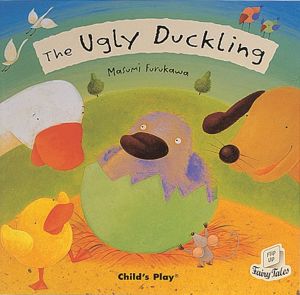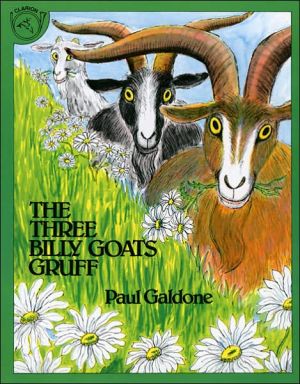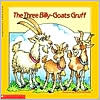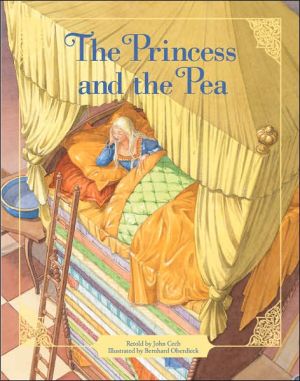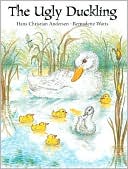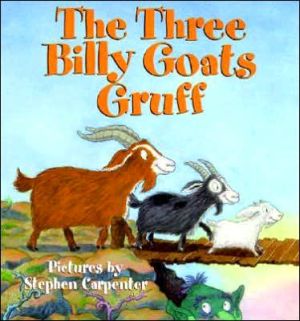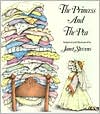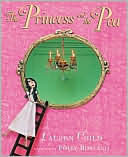The Ugly Duckling
For over one hundred years The Ugly Duckling has been a childhood favorite, and Jerry Pinkney's spectacular new adaptation brings it triumphantly to new generations of readers. With keen emotion and fresh vision, the acclaimed artist captures the essence of the tale's timeless appeal: The journey of the awkward little bird -- marching bravely through hecklers, hunters, and cruel seasons --- is an unforgettable survival story; this blooming into a graceful swan is a reminder of the patience...
Search in google:
For over one hundred years The Ugly Duckling has been a childhood favorite, and Jerry Pinkney's spectacular new adaptation brings it triumphantly to new generations of readers. With keen emotion and fresh vision, the acclaimed artist captures the essence of the tale's timeless appeal: The journey of the awkward little bird -- marching bravely through hecklers, hunters, and cruel seasons --- is an unforgettable survival story; this blooming into a graceful swan is a reminder of the patience often necessary to discover true happiness. Splendid watercolors set in the lush countryside bring drama to life.Publishers WeeklyPinkney's (Rikki-Tikki-Tavi) supple, exquisitely detailed watercolors provide a handsome foil to his graceful adaptation of the Hans Christian Andersen classic. This "duckling" is teased unmercifully by his apparent siblings but loved by the mother duck: "He may not be quite as handsome as the others," she says, "but... I am sure he will make his way in the world as well as anybody." Eventually he runs away, and as the seasons turn, the fledgling has a series of adventures, from a close encounter with a hunting dog to getting trapped in ice. All the while he is growing, transforming, and in the triumphant ending, he finds peace and happiness when his real identity is revealed to himself and to readers. Pinkney's artwork is a swan song to the beauty of the pastoral, and his lush images flow across the pages in sweeping vistas and meticulous close-ups. Whether depicting the subtle patterns and colors of a duck's feathers, the murky twilight of a freshwater pond or the contrast of red berries against dried grasses etched with snow, Pinkney's keenly observed watercolors honor nature in all its splendor. A flawlessly nuanced performance by a consummate craftsman. Ages 3-up. (Mar.)
\ Publishers Weekly\ - Publisher's Weekly\ Pinkney's (Rikki-Tikki-Tavi) supple, exquisitely detailed watercolors provide a handsome foil to his graceful adaptation of the Hans Christian Andersen classic. This "duckling" is teased unmercifully by his apparent siblings but loved by the mother duck: "He may not be quite as handsome as the others," she says, "but... I am sure he will make his way in the world as well as anybody." Eventually he runs away, and as the seasons turn, the fledgling has a series of adventures, from a close encounter with a hunting dog to getting trapped in ice. All the while he is growing, transforming, and in the triumphant ending, he finds peace and happiness when his real identity is revealed to himself and to readers. Pinkney's artwork is a swan song to the beauty of the pastoral, and his lush images flow across the pages in sweeping vistas and meticulous close-ups. Whether depicting the subtle patterns and colors of a duck's feathers, the murky twilight of a freshwater pond or the contrast of red berries against dried grasses etched with snow, Pinkney's keenly observed watercolors honor nature in all its splendor. A flawlessly nuanced performance by a consummate craftsman. Ages 3-up. (Mar.)\ \ \ \ \ Publishers Weekly\ - Publisher's Weekly\ The simplified telling here may be more palatable to younger readers, but it flattens the story, making what was poetic stiff and what was funny too protracted. But San Souci's illustrations rescue the edition, in the colors of a faded, favorite patchwork quiltmuted, with many patterns and quaint touches that contribute to a period setting. Certainly, there was never a more downtrodden, woebegone duckling, who later, unaware of his own new beauty, cannot raise his head in front of the swans; he's afraid that his own ugliness will so offend them that they'll want to kill him. Ages 47. (May)\ \ \ Children's Literature\ - Marilyn Courtot\ Follow the adventures of a poor duckling scorned by all because he is different. When Spring comes he triumphs because he is now a swan. This classic story is richly enhanced byVan Nutt's wonderful illustrations that capture the beauty and colors of the ever changing seasons and the ugly ducklings journey through life's sorrows and joys.\ \ \ \ \ Children's Literature\ - Marilyn Courtot\ Many of Andersen's fairy tales do not have a truly happy ending, but the story of the ugly duckling is one that ends in triumph. The duckling is not like his brothers and sisters and is taunted by them and the other ducks. His mother is protective, but the little duckling is treated so badly that he sets out on his own. After suffering much privation, he suddenly sees a flock of the same beautiful birds that flew by many months ago. He glories in his newfound wings and the strength coursing through his body and decided to join them. Much to his surprise they welcome him, for he too has become a beautiful white swan. Pinkney's watercolors are wonderful. From the mother duck's surprise at the large egg that takes so long to hatch, to the poor ducklings struggles to survive during the harsh winter to the warmth and beauty of spring and his reunion with those who welcome him as one of their own. The sunlight on the water and around the beautiful swan are a reflection of the golden glow of inner joy. A truly lovely adaptation of this classic story.\ \ \ \ \ School Library JournalPreS-Gr 3 --This version of the familiar tale emphasizes the suffering of the duckling whose only misfortune is being in the wrong place at the wrong time. The duckling is depicted in both text and art as ugly, and readers do not see his beauty until the last four pages. The translation also includes elements not found in other books; for instance, a stork chattering in Egyptian and the duckling's wreaking havoc in a farmer's kitchen. The illustrations are done in misty watercolors--mostly in blue or green tones--and do not clarify the text. They are often viewed at various angles, at duck's-eye level or from a sky view, and although artistically interesting, children might find them confusing. One scene depicts a hunting dog in blood-colored water with a dead goose and two blood-spattered geese flying overhead against a red sky. Below, four hunters stare out of the marsh and trees, guns poised. This is not to say that it is a morbid version, only that hardship, pain, and suffering are brought to the forefront. The Ugly Duckling (Knopf, 1986), illustrated by Robert Van Nutt, has clearer illustrations with more child appeal and a smoother writing style. --Regina Pauly, Burlington County Lib . , Mt. Holly, NJ\ \ \ \ \ Hans Christian AndersenAn unusually beautiful version of an old favorite.\ — Book\ \
